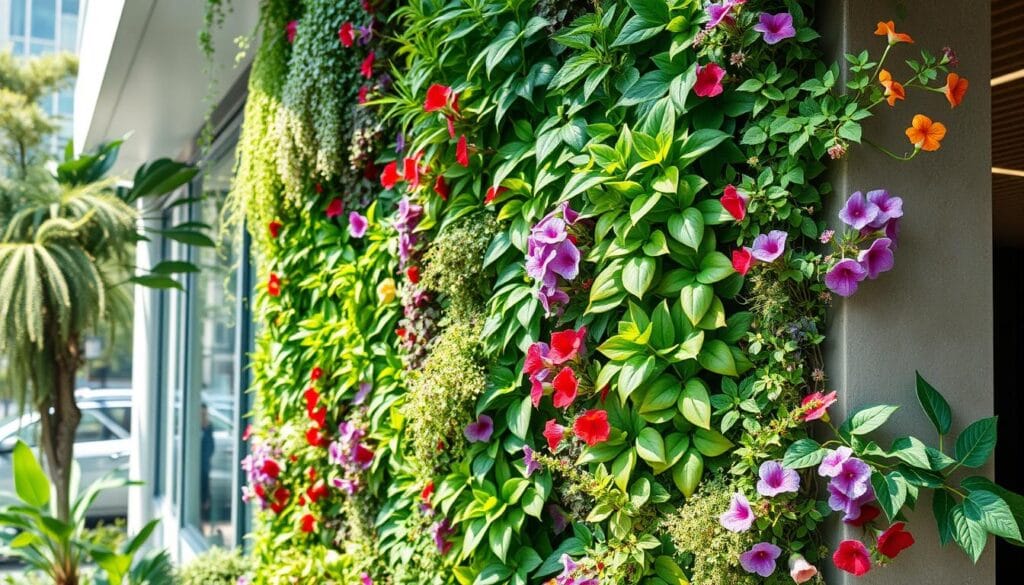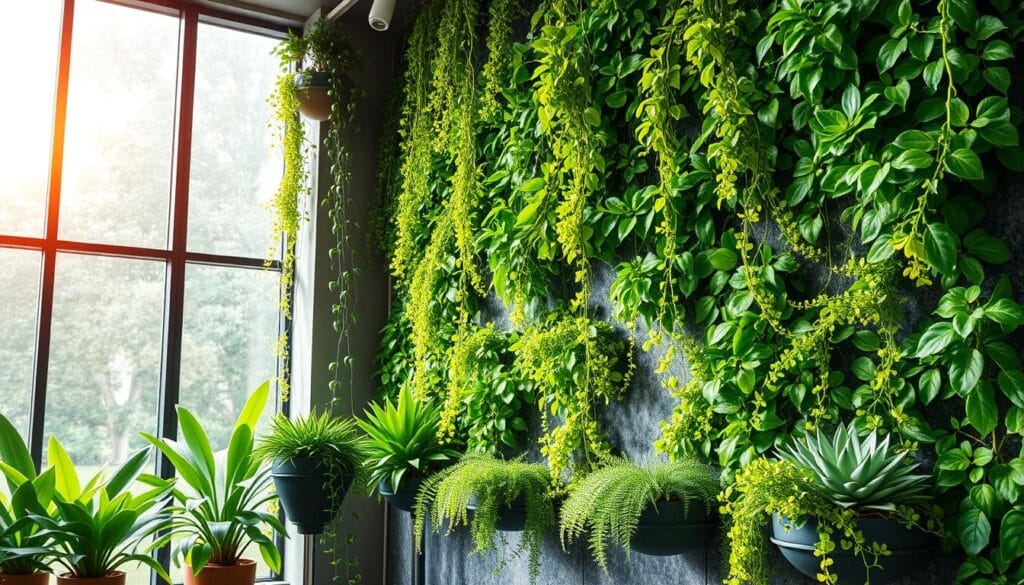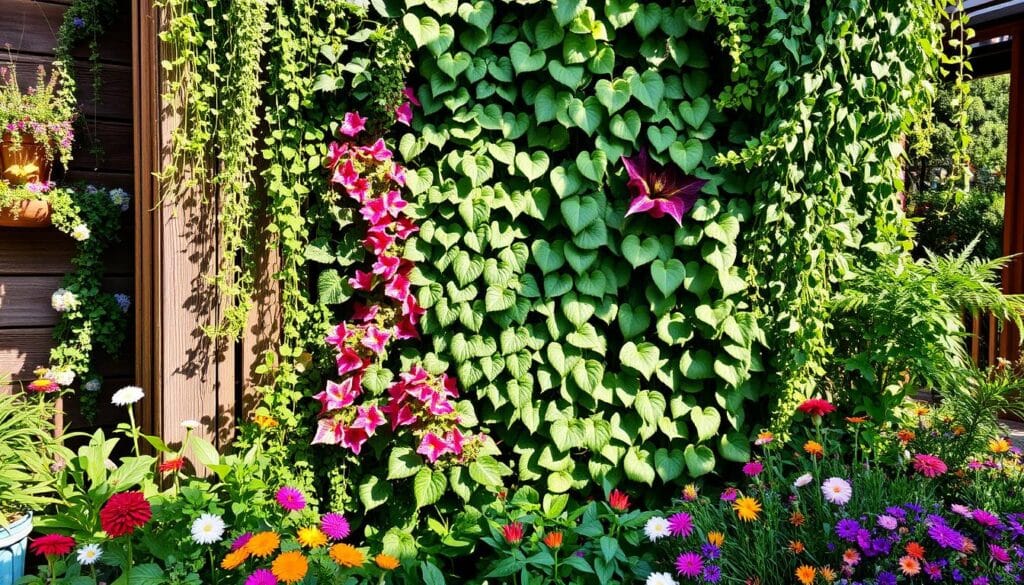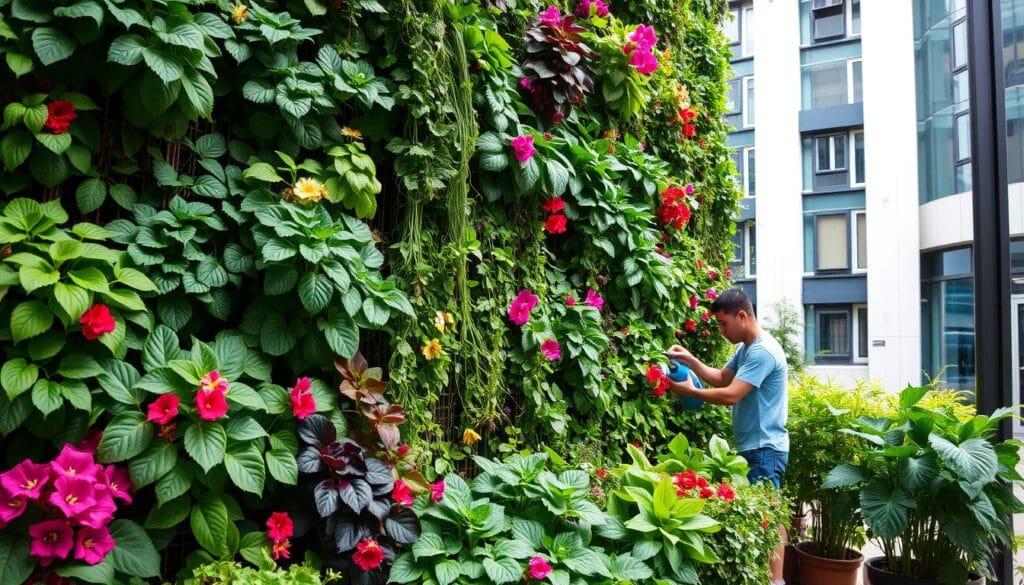LuxioHome
Welcome to Luxiohome — where your dream space becomes reality.
LuxioHome
Welcome to Luxiohome — where your dream space becomes reality.

Elevate your living space with Vertical Gardens – the ultimate space-saving solution for lush, green environments indoors and out.

Urban living is growing, and vertical gardens are a smart solution for small spaces. They make your area look better and improve the air you breathe. This article will show you how to add vertical gardens to your home and keep them healthy.
Vertical gardens are a hit in modern landscaping and design. They bring greenery to places where regular gardening is hard. With many designs, they fit well in homes and public spaces.
Vertical gardens, also known as living walls or green walls, support climbing plants or hold potted plants upright. They turn empty walls into lively displays. You can use simple planters or advanced systems to grow a variety of plants.
Vertical gardens do more than look good. They save space in cities where regular gardens are hard to find. They help:
Adding vertical gardens to your space makes it prettier and helps the planet. As cities grow, these green spaces become key for a greener living area.

Indoor vertical gardens offer a new way to bring greenery into your home. They can turn any space into a living work of art. Learn how to make your space look great with creative plant setups and smart use of walls and shelves.
Setting up an indoor vertical garden is a fun and creative project. You can mix different plants like succulents, ferns, and herbs to make it your own. Each setup can tell a unique story, making your space feel like a lush oasis.
Using layers in your garden adds depth and invites you to explore. It’s a great way to make your space more interesting and interactive.
Walls and shelves are perfect for showing off your indoor garden. By using wall-mounted planters or shelving, you can turn empty space into a green oasis. You can go for simple designs or create something more complex, depending on your style.
This not only makes your space look better but also shows off your creativity in using space wisely.

Outdoor vertical gardens can turn any patio into a lush oasis. They save space and add color and life to your outdoor area. A well-made vertical garden can match your patio’s look and feel, making it a stunning part of your space.
Choosing the right spot for your vertical garden is key. Pick a place that gets enough sunlight for your plants to grow. Make sure the garden fits with your patio’s vibe. Use vertical planters, trellises, or wall systems to make the most of your space.
When picking plants for outdoors, think about your climate, sunlight, and humidity. Pick plants that do well in your area. Here are some good choices:
Having a variety of plants makes your garden lively and attractive. It brings nature closer to your patio, making it a great spot to relax and enjoy the outdoors.

Keeping your vertical gardens healthy is a rewarding task. It needs careful attention to watering and fertilizing. Knowing how to water your plants right can greatly improve their health and growth. Adjusting your care to fit your vertical garden’s needs is key.
Watering is crucial for vertical gardens. Since these setups can hold moisture differently, old methods might not work. Here are some effective ways to water:
Good fertilization is vital for lively plants. To keep your vertical garden thriving, follow these tips:

Vertical gardens are a great way to make living spaces better while using less area. They not only make places look good but also improve the air we breathe. With a little creativity, anyone can add a vertical garden to their home.
Choosing the right plants and taking care of them is key. This way, you can make a green space that shows off your style. As more people start using vertical gardens, it’s a win-win for beauty and health.
Vertical gardens can turn any small space into a beautiful oasis. They’re perfect for making a small apartment look great or adding a highlight to your yard. Start exploring and see how these green solutions can change your space for the better!